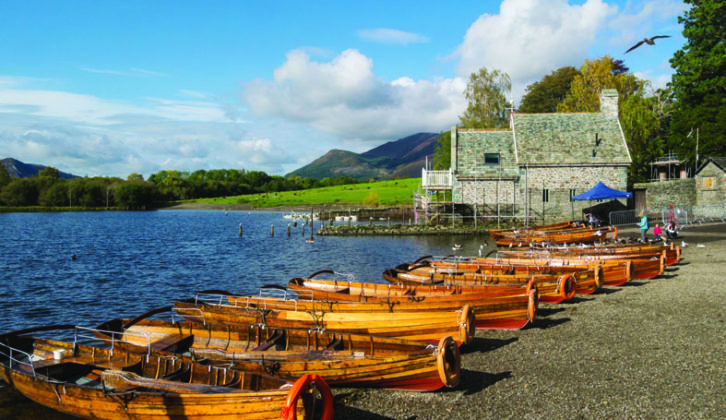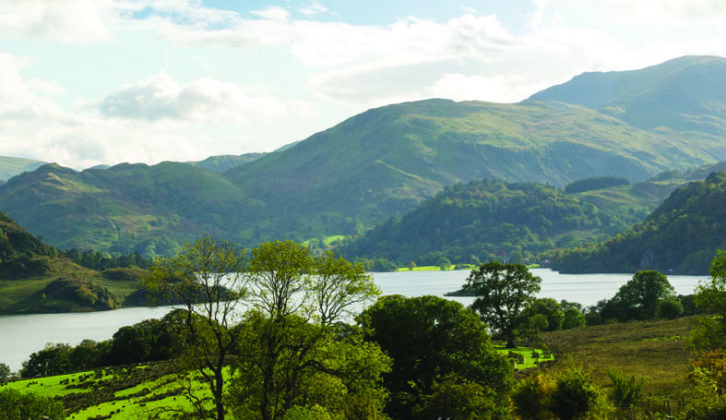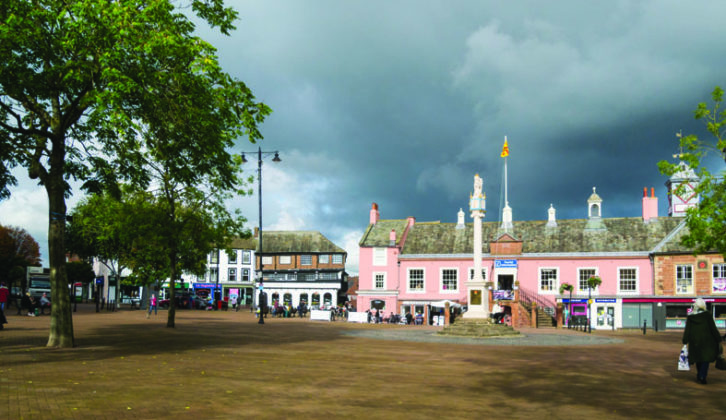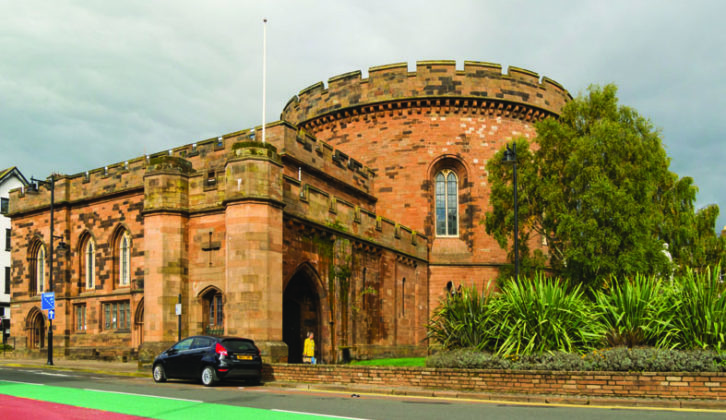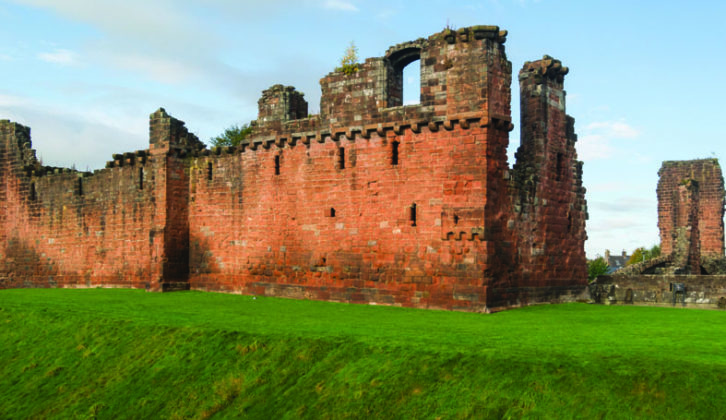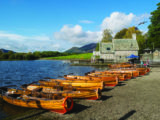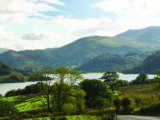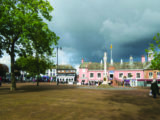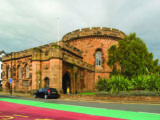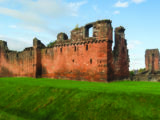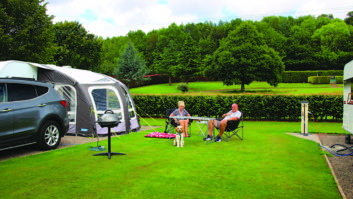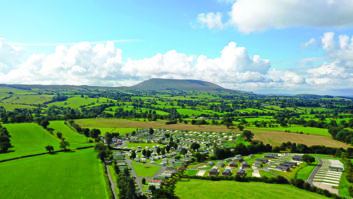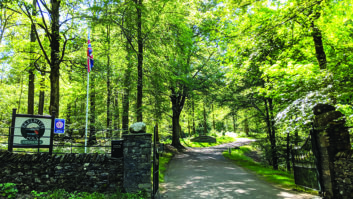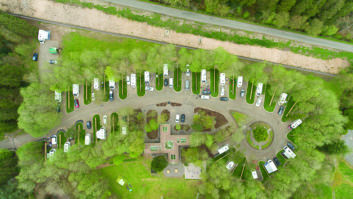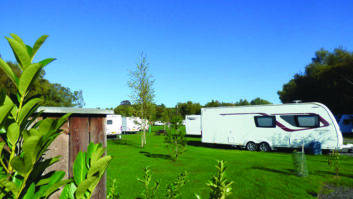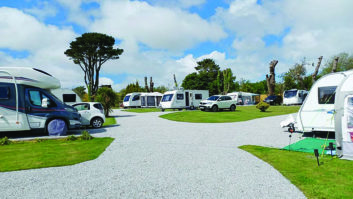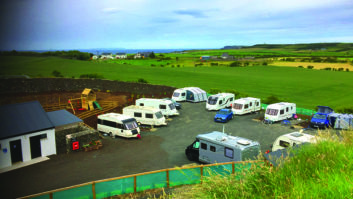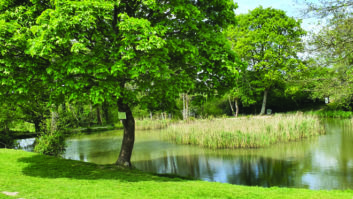This was our final tour of the year, so we decided on a getaway to Cumbria’s Eden Valley, opting to base our trip in Penrith, just a few miles north of the beautiful Lake District.
We booked into Thacka Lea Caravan Park, a small site within walking distance of this historic market town. Once pitched on site, we decided to head out in the car to explore.
Our first stop was the city of Carlisle; it lies at the confluence of three rivers, the Eden, Caldew and Petteril, and is just 10 miles south of the Scottish border.
We headed into the city centre to park and wander around. The first place to find was a café, to satisfy the need for morning coffee – there are plenty to choose from around the bustling Green Market.
Historic architecture
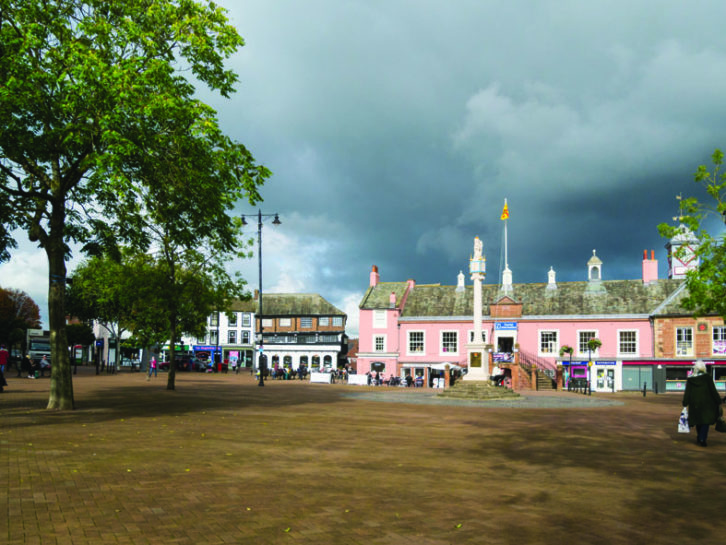
An outstanding sight in Carlisle is the Old Town Hall, now the Tourist Information Centre. This fine Grade I-listed building, medieval in origin, dates mainly from the 17th and 18th centuries.
Over the years, the grander public rooms on the first floor have hosted a number of civic functions, including the Court Assize until 1881, the Magistrates Court until 1941, the Council Chamber, and the offices of the City of Carlisle Corporation unit 1964. A statue of local dignitary James Steel can also be found here.
Steel was born in 1797 and started work as an apprentice at the Carlisle Chronicle before moving to the Carlisle Journal, where he remained until 1819. He then moved to Whitehaven, to work as a printer and publisher of the Whitehaven Gazette, becoming editor of the Kendal Chronicle for a couple of years before returning to Carlisle.
In 1829, he was appointed editor of the Carlisle Journal, where he worked until 1836. That year, he became a local councillor, serving until his death in 1851. He became mayor in 1844 and held the post, unusually, for two consecutive years.
Carlisle’s great citadel
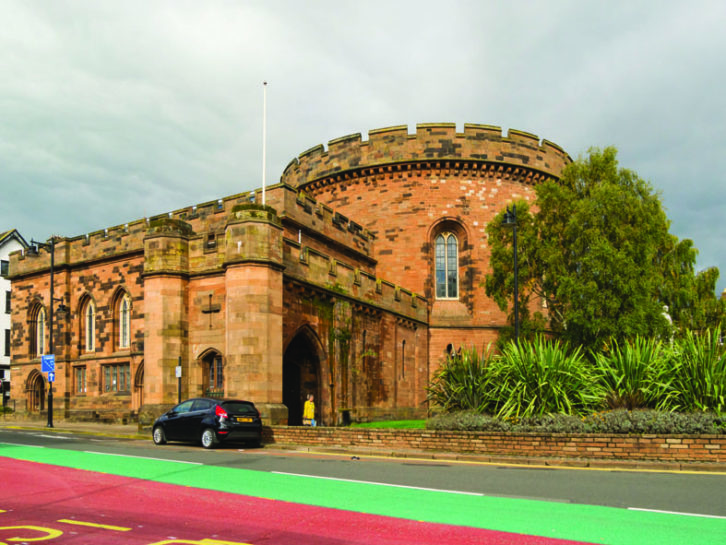
After lunch, we decided to head for the imposing red sandstone buildings of the Citadel. Until recently, the East Tower housed the civil courts and the West Tower, the criminal courts. Both have undergone massive restoration and the West Tower is now open to the public.
In the 16th century, Botchergate, the original entrance to the southern side of the city, was replaced by a fortress designed by Henry VIII’s military engineer, Stefan von Haschenperg. This comprised a square central tower, flanked by round towers to take artillery.
We decided to make our way back to Penrith for afternoon tea. Located in the Eden Valley, three miles north of the Lake District, this bustling market town has an interesting museum, housing Roman pottery and objects of local history.
To the north is Beacon Hill, with its monument built in 1719 to mark where beacons were lit in times of war and emergency. The summit affords visitors wonderful panoramic views.
To the south of the town are the medieval ruins of Brougham Castle and the imposing prehistoric monument of Mayburgh Henge.
Lakes and castles
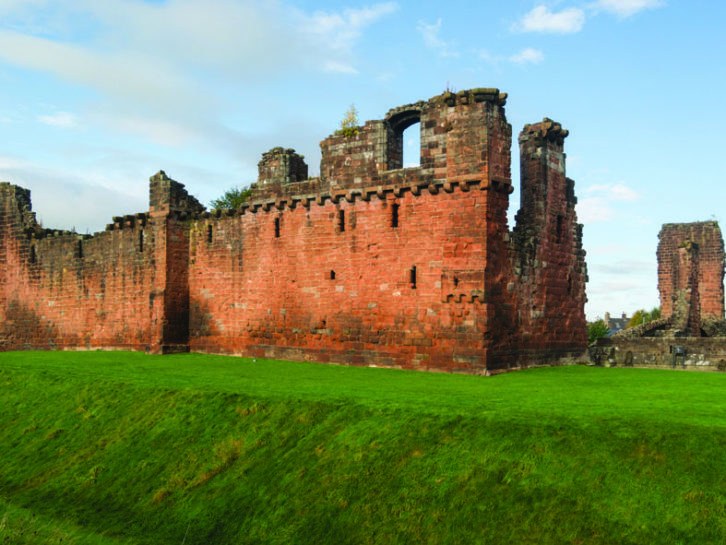
We never need an excuse to visit the Lake District National Park, so the next day we headed towards Keswick. On the way, we stopped off to explore the massive ruins of the medieval Penrith Castle, set on a grassy mound outside the town centre.
Building here began in the 14th century, when the Warden of the West March, Ralph Neville, had an important role in defending the area against the Scots. It was eventually transformed into a luxury residence by the Duke of Gloucester (later Richard III).
Keswick was quite busy, as usual, but we managed to park without difficulty and stopped for coffee, before window-shopping on Main Street, with its many independent shops. With great views of Skiddaw in one direction and Derwentwater in the other, the town has lots to offer visitors.
Keswick has two fine museums, the Derwent Pencil Museum and the Museum and Art Gallery. Dating further back, to the Neolithic era, Castlerigg Stone Circle is to the east of the town. The Moot Hall, built in 1813, a prominent Grade I-listed building on Main Street, has an unusual one-handed clock.
Later in the day, we wandered down to Derwentwater, to enjoy the autumn-hued views across the lake. Here, it was a hive of activity, with the ever-popular boat trips and rowing boats for hire.
The lakeside footpaths were also quite busy – like us, many visitors were enjoying time spent outdoors after being limited by the lockdowns for so long.
Having worked up an appetite, we walked back into town in search of a restaurant and opted for the Treeby & Bolton Café, which is in a local art gallery. Suitably refreshed, we returned to Derwentwater, because the weather improved and the sun reappeared, brightening the wonderful views.
With time running out for our parking spot, we returned to the car and headed for Ullswater, driving around the lake, flanked by Lakeland fells, before returning to the campsite for the night.
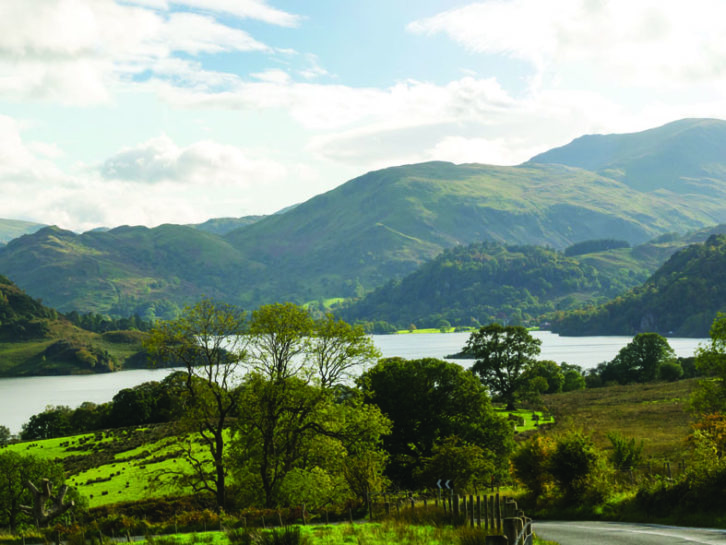
Pennine landscapes
On our final full day, we headed in the other direction, over to Alston, one of the highest market towns in England. The drive took us through heather-clad Pennine landscapes, unsurprisingly designated as an Area of Outstanding Natural Beauty.
Alston has a steep cobbled main street, with a distinctive market cross and stone buildings dating from the 17th century. The area once supported a thriving lead-mining community, and the history of this industry can be discovered at the nearby Nenthead Mines heritage centre.
Usually a bustling place, well-known for delicious specialities such as Cumberland mustard and Alston cheese, the town was extremely quiet during our visit, perhaps because of the extensive roadworks in the centre and, obviously, the continuing effects of the pandemic.
Picturesque Appleby
We enjoyed lunch at the Alston House Hotel before moving on. As we headed back over the heather moors, we noticed a town described as ‘picturesque’ on our map, so we stopped off at Appleby-in-Westmorland – a stroke of luck, as this turned out to be the highlight of our trip.
Deep in the heart of the Eden Valley and crossed by the River Eden, Appleby has an imposing elm-lined main thoroughfare, Boroughgate. The street is bookended by the stone columns of the 17th century High Cross, and its 18th-century copy, the Low Cross. At the top of Boroughgate is Appleby Castle an impressive building dating from the 12th century. Visitors can climb to the roof to admire the spectacular views over the surrounding 25 ares of parkland.
The castle’s long history includes a period of time as a stronghold for local landowning family the Cliffords, ownership by various English kings and at one point, being seized by King William the Lion of Scotland.
In the 17th century, ti was the home of Lady Anne Clifford, who fought a 40-year legal battle to inherit her father’s estates. The most striking feature has to be the dwelling-house, built by her grandson, the Earl of Thanet, and now a fine hotel.
Church and cloister
At the north end of Boroughgate are the elegant cloisters, designed by leading architect Sir Robert Smirke in 1811. This two-storey pavilion contains seven pointed arches, with the arms of Appleby above the central arch. It is Grade II listed and partly conceals the church – there is an entrance to the church through the arches. Many of the other buildings in this charming town are Grade I and II listed.
Appleby is also renowned for its annual Horse Fair, which is usually held on the first weekend in June and attracts thousands of visitors to the area. The earliest record of this historic event appears in a 12th-century charter from Henry I.
Together with some of the surrounding villages, Appleby also hosts the Warcop Rusbearing, another event dating back hundreds of years.
Rushbearing is an ancient ecclesiastical festival, in which rushes are collected by local parishioners and scattered over the church floor. The tradition dates back to the time when most buildings, including churches, had earthen floors, the rush being used as renewable coverings for cleanliness and insulation.
Other important events in the town’s calendar are the Appleby Agricultural Society show, which began in 1841, and the annual carnival.
Having enjoyed afternoon tea in one of Appleby\s excellent cafés, we were heading back to Penrith when we decided on one final detour, to the village of Dufton, below Dufton Pike in the North Pennines.
Dufton, on the eastern Eden Valley, three miles north of Appleby-in-Westmorland, is a designated Conservation Village bordering the North Pennines Area of Outstanding Natural Beauty and on the Pennine Way.
Nearing the end of our trip, we reflected on our time away. Despite the variable weather, we managed to cram a great deal of exploration into our tour, and we enjoyed the many sights to be found in this lovely part of England.
Trip planner
When to go
Autumn is lovely in the Lakes, provided you pack clothing that’s suitable for the variable weather! It is quieter at that time of year, compared with the peak holiday season.
Find out more
- Penrith
- Carlisle
- Carlisle Citadel
- Brougham Castle
- Mayburgh Henge
- Lake District National Park
- Penrith Castle
- Keswick
- Derwentwater
- North Pennines AONB
- Pennine Way
Where we stayed
Thacka Lea Caravan Park
The family-run site at Thacka Lea Caravan Park provides 25 pitches for touring caravans and motorhomes. Pitches are available on hardstanding or grass, each with hook-up.
The park is over three tiers, all with easy access to the central amenities bloc.
- Thank Lea, Penrith, Cumbria, CA11 9HX
- www.thackaleacaravanpark.webs.com
- 01768 863 319
- Open 12 April – 31 October
- Charges (pitch+hook-up) £20
If you liked this… READ THESE:
15 brilliant Areas of Outstanding Natural Beauty
Best caravans: our top picks for every caravanner and budget
If you’ve enjoyed reading this article, why not get the latest news, reviews and features delivered direct to your door or inbox every month. Take advantage of our brilliant Practical Caravan magazine SUBSCRIBERS’ OFFER and SIGN UP TO OUR NEWSLETTER for regular weekly updates on all things caravan related.
We never need an excuse to visit the Lake District National Park, so we headed towards Keswick
